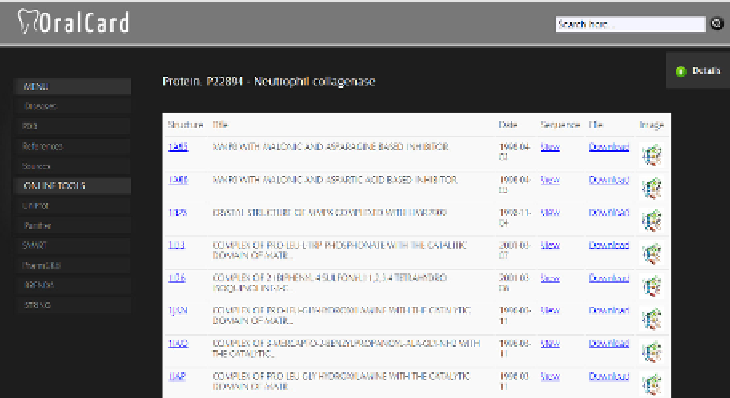Biomedical Engineering Reference
In-Depth Information
Fig. 4.
Structure view for the Neutrophil collagenase protein
Subsequently, in order to understand which salivary protein molecular functions
were altered in diabetes, we found that binding and catalytic activity functions
changed more evidently. That led to the search for pathways in which the binding
molecular function could be acting, in other words, which signalling pathways could
be involved. Our results indicate that the blood coagulation pathway (directly related
to healing) was the one in which the proteins altered in diabetes mellitus patients'
saliva were involved. We then traced molecular networks reflecting the interactions
between proteins involved in this pathway. We found that two key molecules in this
network are two blood coagulation cascade inhibitors.
This methodology has allowed us to identify molecular reasons for the impaired
healing of oral tissues in diabetic patients, as well as some key molecules in this
process, which may be good molecular markers, useful for diagnosis and even good
targets for therapeutic agents.
6
Conclusions
In this paper we described a pipeline for creating web-based databases specialized in a
set of adjacent human organs. We believe that the proposed work is of major impor-
tance for research projects that need an easy and agile solution to share the results of
studies.
Information on the oral cavity is dispersed through different databases focused on
more general systems. In addition, data is not always standardized, which makes their
integration and comprehensive study a colossal task. This work resulted in develop-
ment of an integrated database which comprises a comprehensive catalogue and cha-
racterization of the human oral proteome. It aims to become a fundamental resource
for clarifying human oral biology and establishing a protein biomarker for salivary
diagnostic processes.

Search WWH ::

Custom Search